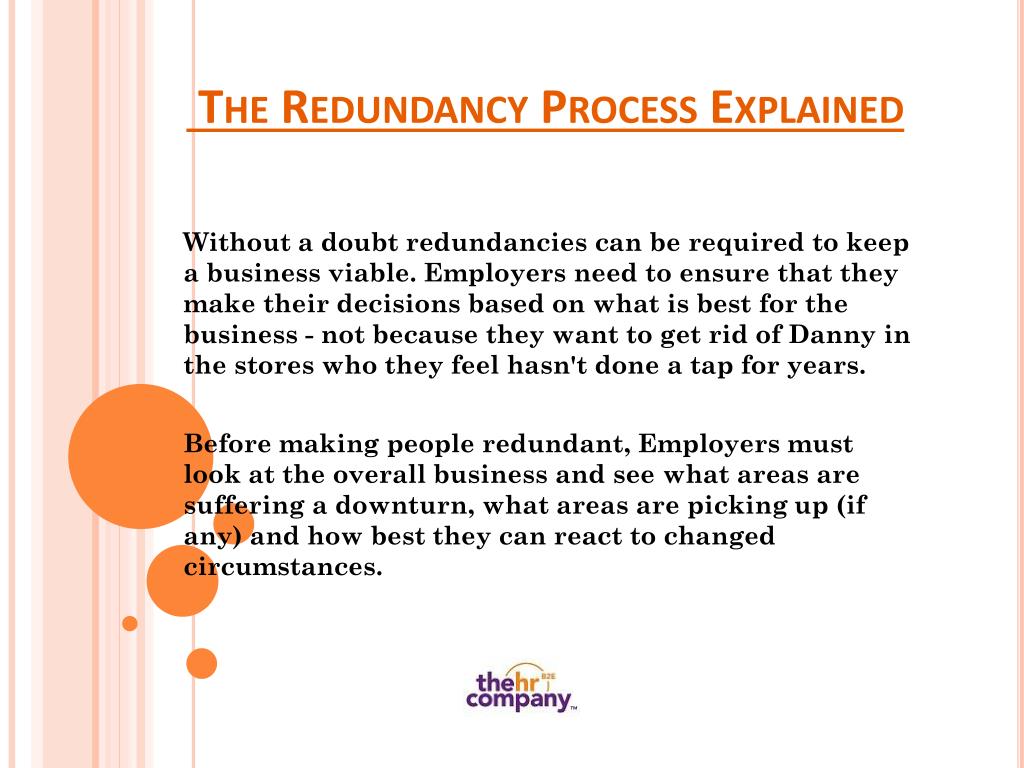Exactly How to Manage Redundancy Pay If Company Goes Bust: Secret Info for UK Workers
Exactly How to Manage Redundancy Pay If Company Goes Bust: Secret Info for UK Workers
Blog Article
Investigating the Interaction In Between Firm Redundancy and Organizational Adaptability for Future Growth
In the vibrant landscape these days's service globe, the elaborate partnership in between company redundancy and business flexibility becomes an essential factor for sustained development and success. Firms often face the obstacle of striking a delicate equilibrium between keeping a degree of redundancy to minimize threats and promoting versatility to respond swiftly to the ever-evolving market demands. This delicate interaction holds the crucial to not only surviving in turbulent times yet additionally thriving despite uncertainty. As we check out the diverse dimensions of this interaction, fascinating understandings right into exactly how organizations navigate these complexities to lead the way for future growth await.
Importance of Firm Redundancy
Business redundancy is an essential aspect that boosts business resilience and alleviates functional risks. By including redundancy actions within the business structure, firms can much better withstand unpredicted disturbances and variations in the organization atmosphere. Redundancy works as a strategic buffer, enabling firms to adjust and respond properly to unexpected obstacles without endangering important procedures.
One key aspect of the significance of firm redundancy is its role in ensuring connection during times of dilemma. When confronted with sudden adjustments or emergency situations, redundant systems, resources, or employees can action in to preserve crucial features and stop extensive disruptions. This continuity not just safeguards the business's reputation and client count on however additionally lessens financial losses and functional downtime.

Approaches for Business Flexibility

Developing versatile organizational structures that permit for quick modifications to market characteristics and customer needs is necessary for staying affordable in a quickly developing atmosphere. By proactively determining prospective interruptions and possibilities, organizations can proactively adjust and grow in an ever-changing service landscape.
Harmonizing Redundancy and Versatility
Accomplishing an unified equilibrium in between functional redundancy and business versatility is paramount in browsing the complexities of a dynamic company environment. Redundancy within a firm gives a safeguard, ensuring continuity and security in procedures. However, an unwanted of redundancy can result in inadequacies and hinder versatility to transforming market conditions. On the other hand, business adaptability permits firms to respond promptly to exterior disturbances and seize new chances. Striking the appropriate balance between redundancy and adaptability is a fragile procedure that calls for a deep understanding of the organization's goals, sector characteristics, and danger tolerance.
To accomplish this equilibrium, companies need to conduct regular assessments of their operations to determine locations where redundancy is essential for danger mitigation and where versatility can drive development and development. Carrying out versatile structures, promoting a culture of continual discovering and improvement, and encouraging open interaction across all levels of the organization are crucial strategies to harmonize redundancy and versatility properly. By aligning these 2 important components, companies can place themselves for the original source sustainable growth and success in an ever-changing organization landscape.
Case Studies on Adaptation Success
In analyzing circumstances of successful business adjustment, it ends up being evident that the interaction in between functional redundancy and adaptability is a specifying variable in shaping resilient organizations. A DVD rental service, Netflix demonstrated amazing flexibility by transitioning right into a streaming system when digitalization interfered with the sector. These instance research studies highlight the relevance of functional redundancy paired with organizational flexibility in cultivating lasting growth and competition.
Building Strength for Future Development
Structure strength for future growth needs a strategic positioning of operational procedures with market dynamics and emerging trends. Firms must adapt to altering atmospheres by fostering a society of versatility, advancement, and constant renovation.
Furthermore, fostering solid relationships with stakeholders, such as clients, staff members, suppliers, and the community, is important for keeping and weathering unpredictabilities trust and support during stormy times. Effective communication and transparency play an important function in building durability, as they aid straighten expectations and promote collaboration in browsing uncertainties.
In addition, companies need to focus on knowing and growth campaigns to upskill workers and equip them with the needed devices to adjust to altering conditions. By buying their labor force, companies can enhance their versatility and dexterity, ultimately strengthening their strength for sustainable future development.
Conclusion

In the vibrant landscape of today's organization globe, the complex relationship in between business redundancy and organizational flexibility emerges as a vital aspect for continual development and success. Companies commonly deal with the difficulty of striking a fragile balance between maintaining a level of redundancy to mitigate dangers and fostering flexibility to respond quickly to the ever-evolving market needs.To accomplish this equilibrium, address companies need to carry out regular evaluations of their operations to determine locations where redundancy is required for threat mitigation and where adaptability can drive advancement and development.In final thought, the interplay between firm redundancy and business adaptability is essential for future development. Structure strength with a combination of redundancy and adaptability will see ensure that firms are prepared for the obstacles of the future.
Report this page